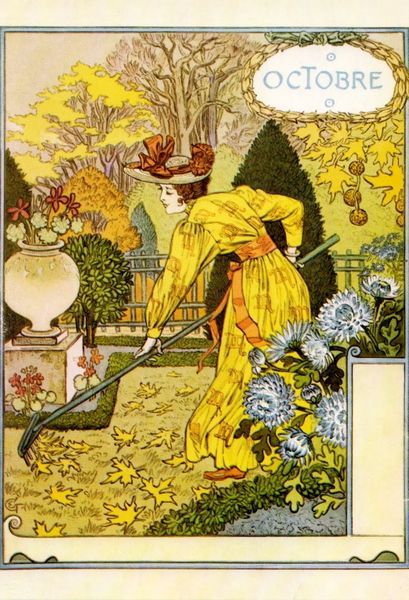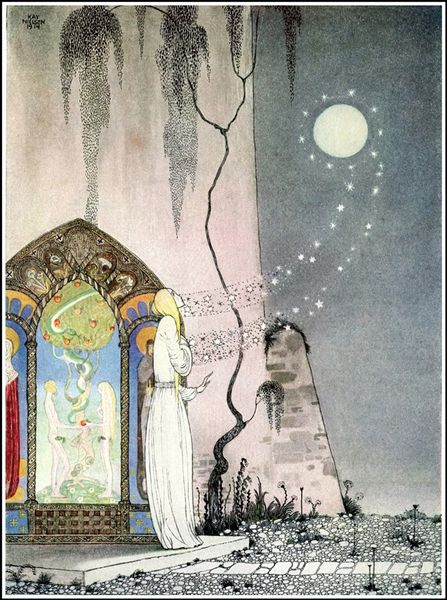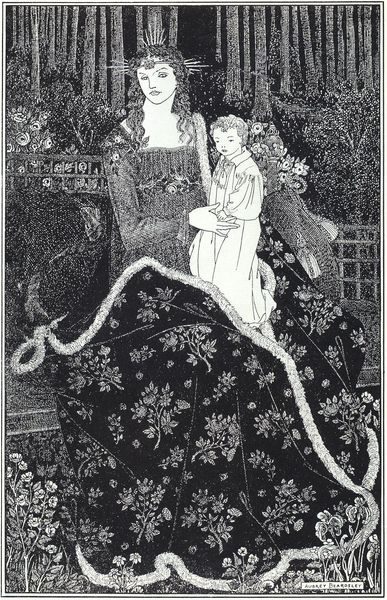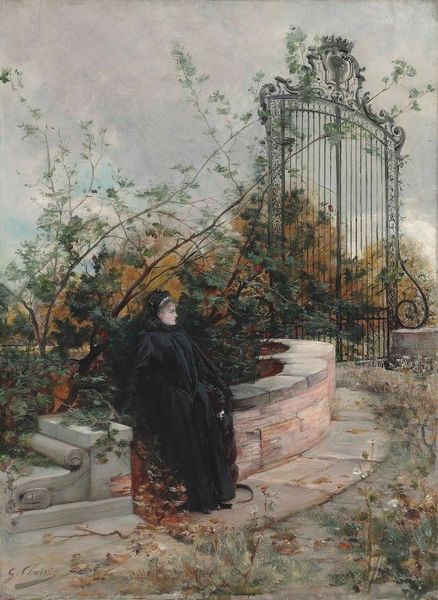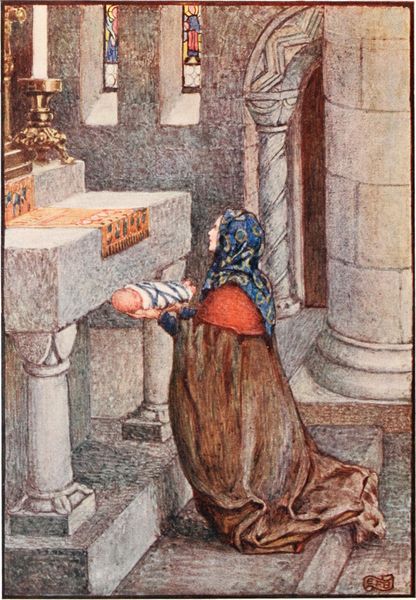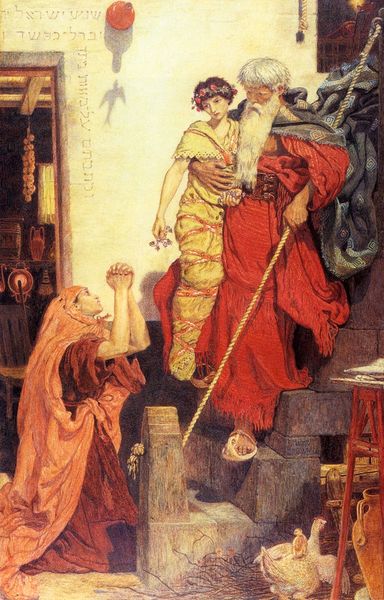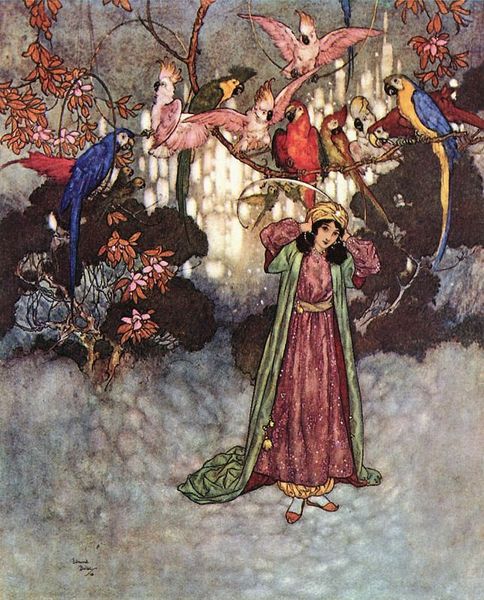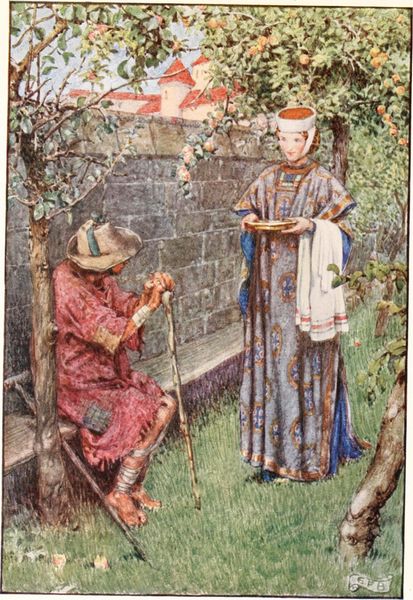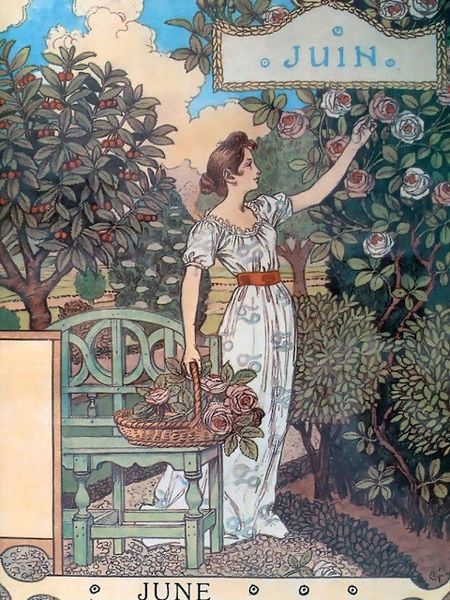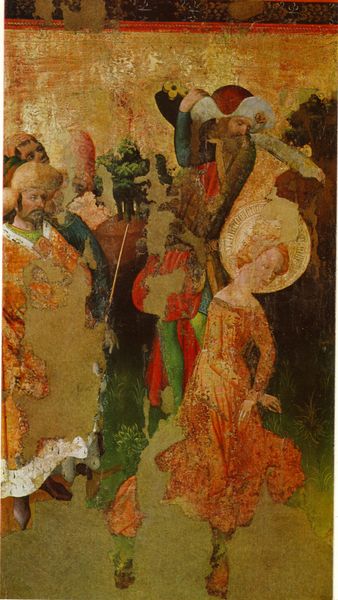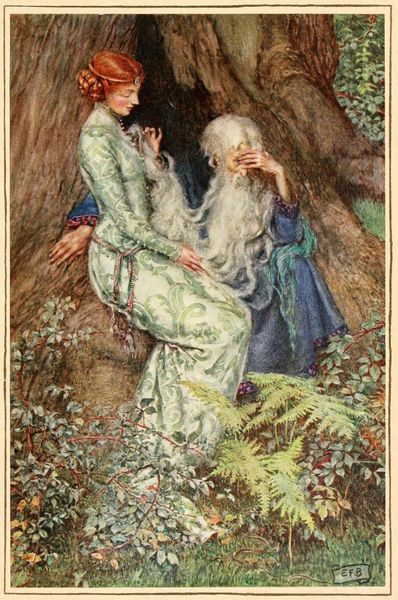
carving, painting, watercolor
#
portrait
#
carving
#
painting
#
arts-&-crafts-movement
#
landscape
#
classical-realism
#
figuration
#
oil painting
#
watercolor
#
coloured pencil
#
genre-painting
#
mixed media
#
watercolor
Copyright: Public domain
Curator: Welcome. Before us is Eleanor Fortescue-Brickdale's watercolor and gouache piece, "Like to those garden-glories which here be," painted around 1920. Editor: It exudes tranquility. The composition, the woman’s serene posture...it’s utterly peaceful. The cool tones emphasize the feeling. Curator: The sundial at the garden's heart points to the symbolism that resonates within the Arts and Crafts movement: the integration of art and nature, a yearning for simpler times, a turn away from the industry’s overwhelming spread, and also, more traditionally, time, the passage of it. Editor: Absolutely, sundials mark not only hours but transience. Note how the garden itself functions as an Edenic image, walled away and safe. What strikes me, though, is the woman, who appears not quite of this world. Her garb signals another time entirely. Is she memory, an embodiment of some forgotten ideal? Curator: Fortescue-Brickdale was known for imbuing her paintings with historical and literary allusions. Often, it references pre-Raphaelite conventions while establishing a unique narrative voice during a transformative time when ideas around female roles were renegotiated in social and professional fields. Editor: Her dress seems inspired by the Tudor period—or a romanticized vision of it—linking the garden, with its stone terraces and vibrant flowerbeds, to a nostalgia for a bygone era of supposed Englishness. Perhaps she carries flowers associated with remembrance too. Curator: The overall atmosphere echoes the societal shifts post-World War One, when idyllic settings and romanticised figures were heavily sought as an antidote for both cultural and economic restoration. The presence of classical imagery is certainly not innocent from socio-political significance, so prevalent during that era. Editor: A refuge then. Even the careful precision in depicting flora points to nature’s comforting continuity amid upheaval. There is a deeper theme beyond mere aesthetics here: an active remembrance through aesthetic idealism. Curator: Indeed, the formal garden presents order, harmony as if responding to chaos through its layout and design and, perhaps, the artist uses it to engage critically with her time. Editor: The sundial and carefully tended plants aren’t merely decorative; they’re emblems of human attempts to impose order on existence itself and perhaps also a reference to life cycles as constant patterns, just as the role of art might be regarded to society. Thank you for your astute analysis. Curator: A pleasure. Considering this historical and iconographic depth enriches our understanding, wouldn't you agree?
Comments
No comments
Be the first to comment and join the conversation on the ultimate creative platform.
